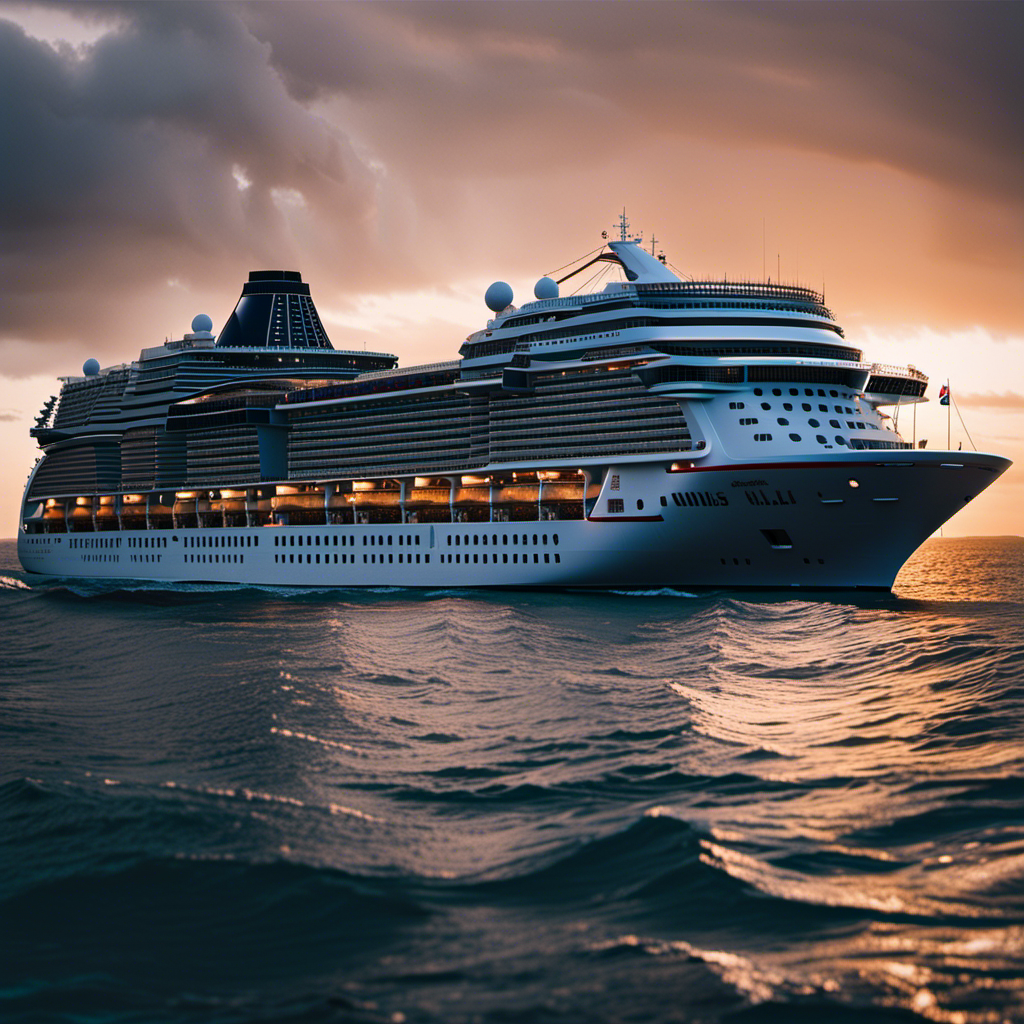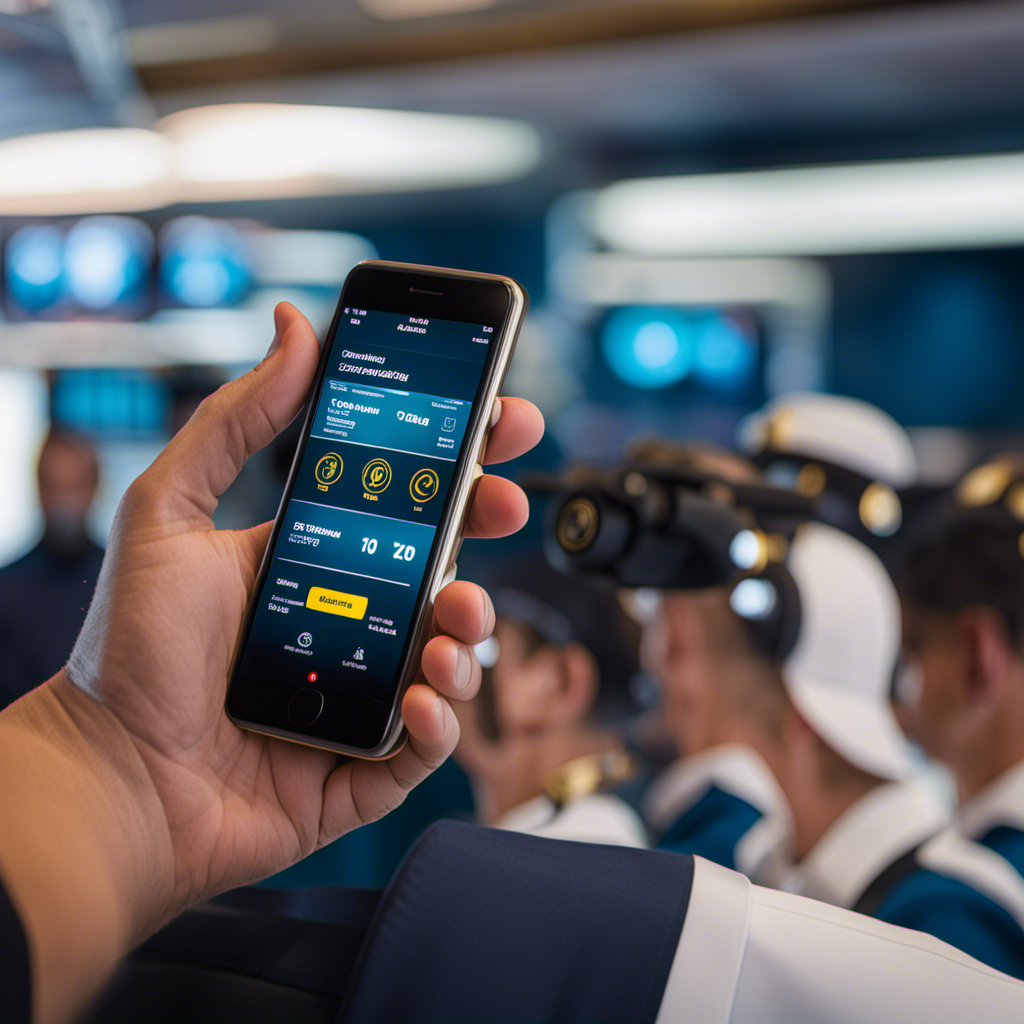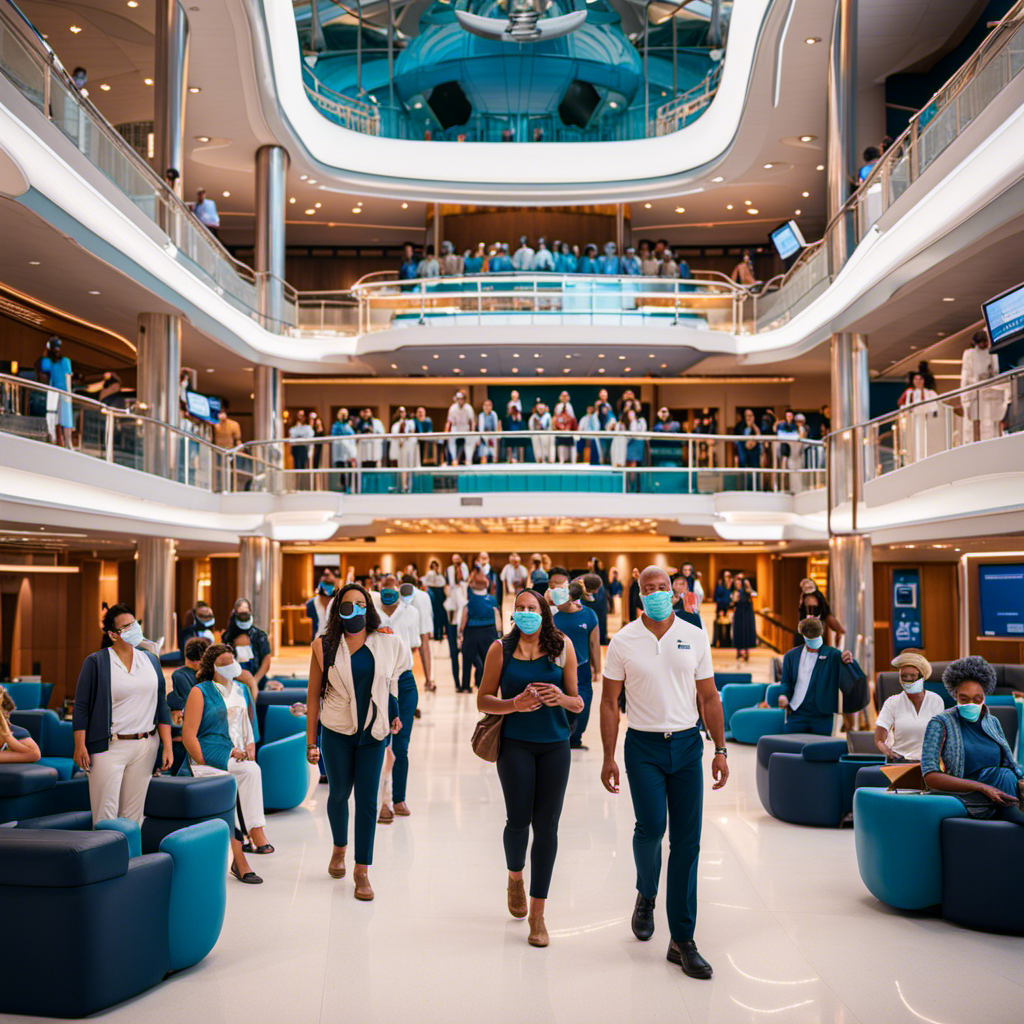I’ve always been fascinated by how cruise ships can adjust and fulfill various roles, especially in times of crisis. Whether converting into makeshift hospitals or offering refuge to recovering workers, these vessels have played a key role in meeting demands in numerous global emergencies.
With the ongoing COVID-19 pandemic, cruise ships have once again been called into humanitarian service, offering their fleet for similar use worldwide. As a cruise journalist and historian who has sailed on over 200 cruises, I am excited to delve into the historical utilization and innovative applications of cruise ships in times of crisis.
Key Takeaways
- Cruise ships have been historically used in times of crisis, such as war, political crises, and natural disasters, serving as transports, rescue ships, floating hospitals, and accommodation centers.
- In the COVID-19 pandemic, cruise ships like Star Cruises’ SuperStar Gemini and SuperStar Aquarius in Singapore and MSC’s cruise ferry Splendid in Northern Italy were called into humanitarian service, accommodating recovering workers and serving as a floating hospital respectively.
- Carnival Corporation offered its fleet globally for similar humanitarian use during the pandemic.
- Cruise ships have been adapted and used in innovative ways to serve the needs of affected communities during crisis situations.
Historical Utilization of Cruise Ships in Crisis Situations
During times of war, political crises, and natural disasters, cruise ships have been utilized as transports, rescue ships, floating hospitals, and accommodation centers. The evolution of cruise ship design in crisis situations has played a significant role in their effectiveness.
Cruise ships have adapted to meet the needs of affected communities, such as by providing medical facilities and transportation capabilities. This evolution has involved the incorporation of advanced medical equipment, increased storage capacity for supplies, and the ability to convert public spaces into temporary living quarters.
The economic impact of utilizing cruise ships during crises is substantial. By repurposing these vessels, governments and organizations can save costs on constructing temporary facilities and transportation logistics. Additionally, the employment opportunities created for cruise ship staff during these times contribute to the local economy.
Overall, the utilization of cruise ships in crisis situations has proven to be a valuable and efficient solution.
Cruise Ships’ Role in the COVID-19 Pandemic
In the COVID-19 pandemic, cruise ships like Star Cruises’ SuperStar Gemini and SuperStar Aquarius, as well as MSC’s cruise ferry Splendid, have stepped in to provide much-needed assistance. They have accommodated recovering workers and served as a floating hospital, respectively.
Cruise ships have played a crucial role in the current crisis, showcasing their adaptability and versatility. They have not only provided medical support but also helped alleviate the strain on local healthcare systems. By transforming into floating hospitals, they have offered relief to overwhelmed hospitals on land.
Additionally, these ships have made a significant impact on local economies. They have generated revenue for port cities and created employment opportunities for local businesses.
Looking ahead, cruise ships are likely to continue playing a vital role in future crises. Their ability to mobilize quickly and provide essential services makes them valuable assets in emergency situations.
However, it is also crucial to consider the long-term effects of relying on cruise ships in crisis situations. Developing sustainable solutions that benefit both communities and the cruise industry is essential.
Cruise Ships’ Contributions During World War II
I’ve discovered that cruise ships were enlisted for war duties in World War II, playing crucial roles in the war effort. These floating behemoths were repurposed to transport troops, serve as hospital ships, and even act as accommodation centers for military personnel. They proved to be invaluable assets in times of crisis, showcasing their versatility and adaptability.
But cruise ships’ contributions extended beyond the battlefield. In the aftermath of natural disasters, these vessels often served as temporary shelters, providing refuge and basic necessities to affected communities. Their ability to swiftly mobilize and offer assistance made a significant impact on the recovery efforts.
Additionally, cruise ships also played a vital role in local economies. When docked at ports, they brought in a steady stream of tourists, boosting tourism revenue and providing employment opportunities for local residents. The economic ripple effect caused by the presence of these floating cities cannot be understated.
Innovative Applications of Cruise Ships in Crisis Scenarios
When faced with challenging situations, these floating giants have proven their adaptability by finding innovative ways to serve affected communities.
Adapted cruise ships have become crucial assets in crisis response initiatives. During the COVID-19 pandemic, cruise ships like Star Cruises’ SuperStar Gemini and SuperStar Aquarius have been repurposed to accommodate recovering workers in Singapore, while MSC’s cruise ferry Splendid has served as a floating hospital in Northern Italy. Carnival Corporation has also offered its fleet globally for similar humanitarian use.
These adapted cruise ships provide much-needed support and resources, ensuring the well-being of individuals in crisis. By transforming their spaces and facilities, cruise ships have become versatile platforms for medical assistance, accommodation centers, and transport hubs.
Their ability to swiftly adapt and serve in times of crisis highlights the invaluable role they play in humanitarian efforts worldwide.
Peter Knego: A Cruise Journalist and Historian’s Perspective
As a cruise journalist and historian, Peter Knego’s expertise in cruise ship history adds depth to our understanding of their important role in crisis situations.
Throughout history, cruise ships have been utilized in various ways during times of war, political crises, and natural disasters. They have served as transports, rescue ships, floating hospitals, and accommodation centers.
For example, during World War I, ocean liners were used in trooping service, while hospital ships provided medical assistance. In the COVID-19 pandemic, cruise ships like Star Cruises’ SuperStar Gemini and SuperStar Aquarius accommodated recovering workers in Singapore, and MSC’s cruise ferry Splendid served as a floating hospital in Northern Italy. Carnival Corporation even offered its fleet for similar use globally.
Cruise ships have also played crucial roles in World War II, although specific details are not provided.
Furthermore, cruise ships have been adapted in innovative ways to serve the needs of affected communities during crisis situations.
Peter Knego’s extensive knowledge and experience in this field greatly contribute to our understanding of cruise ship history.
Cruise Ships as Lifesaving Assets in Times of Crisis
Throughout history, these vessels have been instrumental in providing essential aid and support to communities in need during difficult circumstances. Cruise ships have been utilized as floating hospitals, offering medical assistance to those affected by wars, political crises, and natural disasters. They have also served as emergency shelters, providing accommodation for displaced individuals.
In the current COVID-19 pandemic, cruise ships have been called into humanitarian service. For example, Star Cruises’ SuperStar Gemini and SuperStar Aquarius have accommodated recovering workers in Singapore, while MSC’s cruise ferry Splendid has served as a floating hospital in Northern Italy. Carnival Corporation has even offered its fleet for similar use globally.
Cruise ships have a long history of adapting to serve the needs of affected communities, making them invaluable assets in times of crisis.
Frequently Asked Questions
How Have Cruise Ships Been Utilized During Times of War and Political Crises?
Cruise ships have been utilized as aid in conflict and in political crises. They have served as transports, rescue ships, floating hospitals, and accommodation centers, playing crucial roles in times of war and providing assistance in times of crisis.
What Examples Are There of Cruise Ships Being Used as Floating Hospitals During Natural Disasters?
During natural disasters, cruise ships have been used as floating hospitals. For example, in the COVID-19 pandemic, MSC’s cruise ferry Splendid served as a floating hospital in Northern Italy, providing medical assistance to those in need.
Can You Provide Specific Examples of Cruise Ships Being Called Into Humanitarian Service During the COVID-19 Pandemic?
Cruise ships, such as Star Cruises’ SuperStar Gemini and MSC’s cruise ferry Splendid, were called into humanitarian service during the COVID-19 pandemic. They provided accommodations for recovering workers and served as floating hospitals in Singapore and Northern Italy, respectively.
How Did Cruise Ships Contribute to the War Effort During World War Ii?
During World War II, cruise ships made significant contributions to the war effort. They were enlisted for various war duties and played crucial roles in transporting troops, supplies, and serving as accommodation centers in times of war and political crises.
What Are Some Innovative Ways That Cruise Ships Have Been Adapted to Serve the Needs of Affected Communities During Crisis Situations?
Cruise ships have been adapted in innovative ways to serve affected communities during crisis situations. They have implemented various adaptation strategies and provided crucial community support, making them true lifesavers in times of crisis.
Claire, a creative soul with an unquenchable thirst for storytelling, is an integral part of the Voyager Info team. As a dedicated writer, she weaves captivating narratives that transport readers to enchanting cruise destinations and beyond.
Claire’s love affair with writing began at an early age when she discovered the magic of words and their ability to craft worlds and emotions. Her innate curiosity led her to explore various literary genres, but it was travel writing that truly captured her heart. Drawing inspiration from her own globetrotting adventures and encounters with diverse cultures, Claire embarked on a journey to become a travel writer par excellence.











